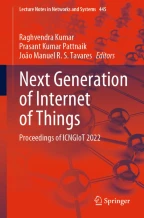Software Testability (Its Benefits, Limitations, and Facilitation)

Software testing refers to a testability method which has test support to improve and predict the software testability. Various types of method have been adopted by researchers and practitioners to improve the testability mechanism in software testing domain. This paper main objective is to reviewing the body of knowledge in this domain and provides a comprehensive overview to new readers and researchers about the software testability. This review selected eighteen papers as evidence to discuss the benefits, limitations, and proposed methods in the domain of software testing. We believe that this short review will give a quick overview to new researchers and readers in the field of software testability.
This is a preview of subscription content, log in via an institution to check access.
Access this chapter
Subscribe and save
Springer+ Basic
€32.70 /Month
- Get 10 units per month
- Download Article/Chapter or eBook
- 1 Unit = 1 Article or 1 Chapter
- Cancel anytime
Buy Now
Price includes VAT (France)
eBook EUR 160.49 Price includes VAT (France)
Softcover Book EUR 210.99 Price includes VAT (France)
Tax calculation will be finalised at checkout
Purchases are for personal use only
Similar content being viewed by others

A Literature Review on Software Testing Techniques
Chapter © 2022

A Study on Identification of Issues and Challenges Encountered in Software Testing
Chapter © 2021

Gap between academia and industry: a case of empirical evaluation of three software testing methods
Article 28 October 2019
References
- Wohlin C (2014) Guidelines for snowballing in systematic literature studies and a replication in software engineering. In Proceedings of the 18th international conference on evaluation and assessment in software engineering, p 38 Google Scholar
- Garousi V, Eskandar MM, Herkiloğlu K (2017) Industry–academia collaborations in software testing: experience and success stories from Canada and Turkey. Software Qual J 25:1091–1143 ArticleGoogle Scholar
- Shaheen MR, Du Bousquet L (2010) Survey of source code metrics for evaluating testability of object oriented systems Google Scholar
- Ertam F, Aydın G (2017) Data classification with deep learning using Tensorflow. In 2017 international conference on computer science and engineering (UBMK), pp 755–758 Google Scholar
- Huda M, Arya Y, Khan M (2014) Measuring testability of object oriented design: a systematic review. Int J Sci Eng Technol (IJSET) 3:1313–1319 Google Scholar
- Häser F, Felderer M, Breu R (2014) Software paradigms, assessment types and non-functional requirements in model-based integration testing: a systematic literature review. In Proceedings of the 18th international conference on evaluation and assessment in software engineering, p 29 Google Scholar
- Garousi V (2015) A bibliometric analysis of the Turkish software engineering research community. Scientometrics 105:23–49 ArticleGoogle Scholar
- Hassan MM, Afzal W, Lindström B, Shah SMA, Andler SF, Blom M (2016) Testability and software performance: a systematic mapping study. In Proceedings of the 31st annual ACM symposium on applied computing, pp 1566–1569 Google Scholar
- Suri PR, Singhani H (2015) Object oriented software testability (OOSTe) metrics analysis. Int J Comp Appl Technol Res 4:359–367 Google Scholar
- Felderer M, Zech P, Breu R, Büchler M, Pretschner A (2016) Model-based security testing: a taxonomy and systematic classification. Softw Test Verification Reliab 26:119–148 ArticleGoogle Scholar
- Petersen K, Vakkalanka S, Kuzniarz L (2015) Guidelines for conducting systematic mapping studies in software engineering: an update. Inf Softw Technol 64:1–18 ArticleGoogle Scholar
- Petersen K, Feldt R, Mujtaba S, Mattsson M (2008) Systematic mapping studies in software engineering. Ease 68–77 Google Scholar
- Suri PR, Singhani H (2015) Object oriented software testability survey at designing and implementation phase. Int J Sci Res 4:3047–3053 Google Scholar
- Binder RV (1994) Design for testability in object-oriented systems. Commun ACM 37:87–102 ArticleGoogle Scholar
- Nikfard P, Ibrahim SB, Rouhani B, Selamat HB, Mahrin MN (2013) An evaluation for model testability approaches. Int J Comp Technol 9 Google Scholar
- Felderer M, Fourneret E (2015) A systematic classification of security regression testing approaches. Int J Softw Tools Technol Transfer 17:305–319 ArticleGoogle Scholar
- Baride S, Dutta K (2011) A cloud based software testing paradigm for mobile applications. ACM SIGSOFT Softw Eng Notes 36:1–4 ArticleGoogle Scholar
- Murugesan L, Balasubramanian P (2014) Cloud based mobile application testing. In 2014 IEEE/ACIS 13th international conference on computer and information science (ICIS), pp 287–289 Google Scholar
- Obaid AJ, Chatterjee T, Bhattacharya A (2020) Semantic web and web page clustering algorithms: a landscape view. EAI Endorsed Trans Energy Web 8(33) Google Scholar
Author information
Authors and Affiliations
- University of Kufa Iraq, Najaf, Iraq Jammel Mona
- Jammel Mona
You can also search for this author in PubMed Google Scholar
Corresponding author
Editor information
Editors and Affiliations
- GIET University, Gunupur, India Raghvendra Kumar
- KIIT University, Bhubaneswar, Odisha, India Prasant Kumar Pattnaik
- Faculdade de Engenharia da, Universidade do Porto, Porto, Portugal João Manuel R. S. Tavares
Rights and permissions
Copyright information
© 2023 The Author(s), under exclusive license to Springer Nature Singapore Pte Ltd.
About this paper
Mona, J. (2023). Software Testability (Its Benefits, Limitations, and Facilitation). In: Kumar, R., Pattnaik, P.K., R. S. Tavares, J.M. (eds) Next Generation of Internet of Things. Lecture Notes in Networks and Systems, vol 445. Springer, Singapore. https://doi.org/10.1007/978-981-19-1412-6_23
Download citation
- DOI : https://doi.org/10.1007/978-981-19-1412-6_23
- Published : 27 September 2022
- Publisher Name : Springer, Singapore
- Print ISBN : 978-981-19-1411-9
- Online ISBN : 978-981-19-1412-6
- eBook Packages : EngineeringEngineering (R0)
Share this paper
Anyone you share the following link with will be able to read this content:
Get shareable link
Sorry, a shareable link is not currently available for this article.
Copy to clipboard
Provided by the Springer Nature SharedIt content-sharing initiative


